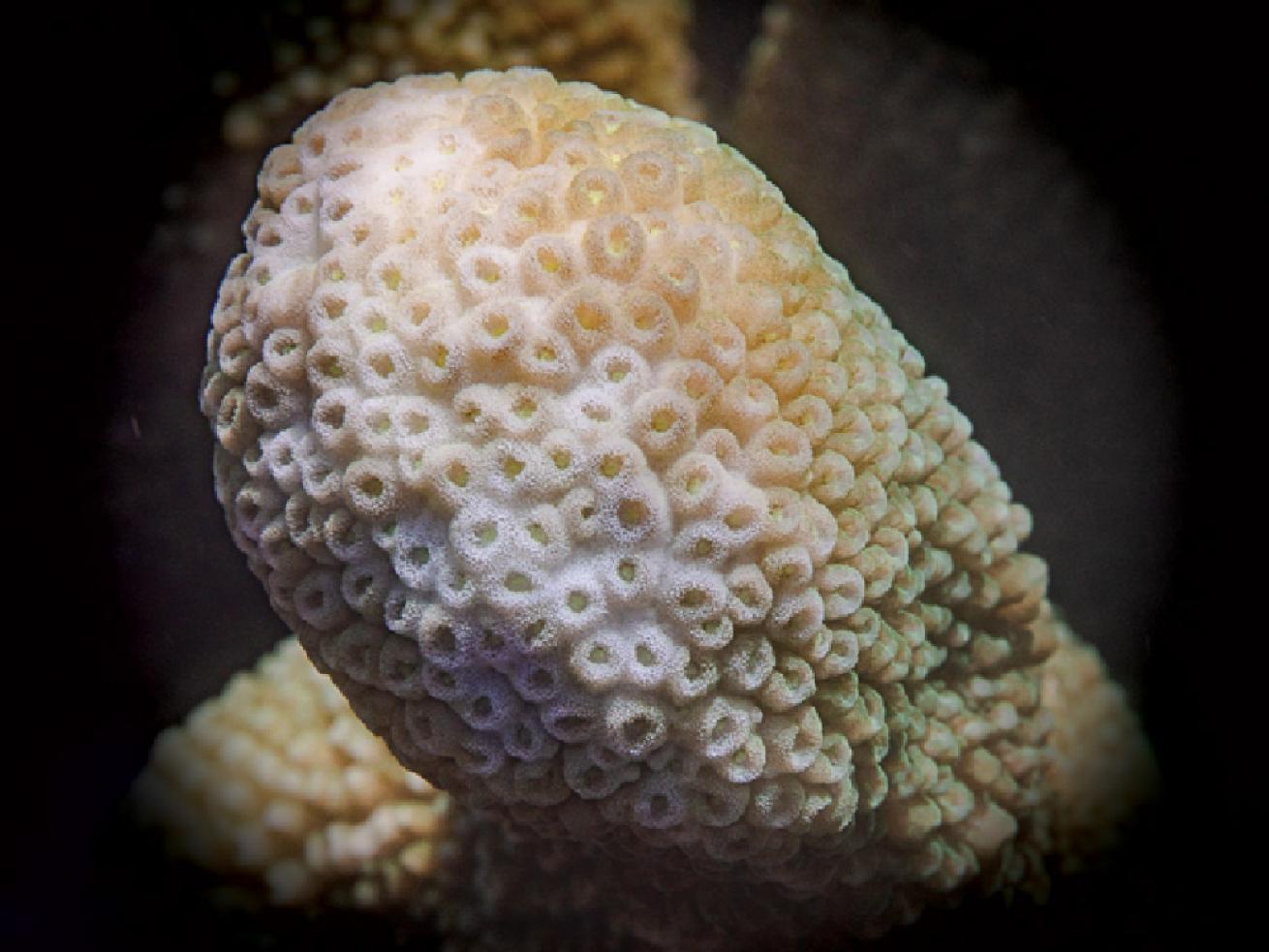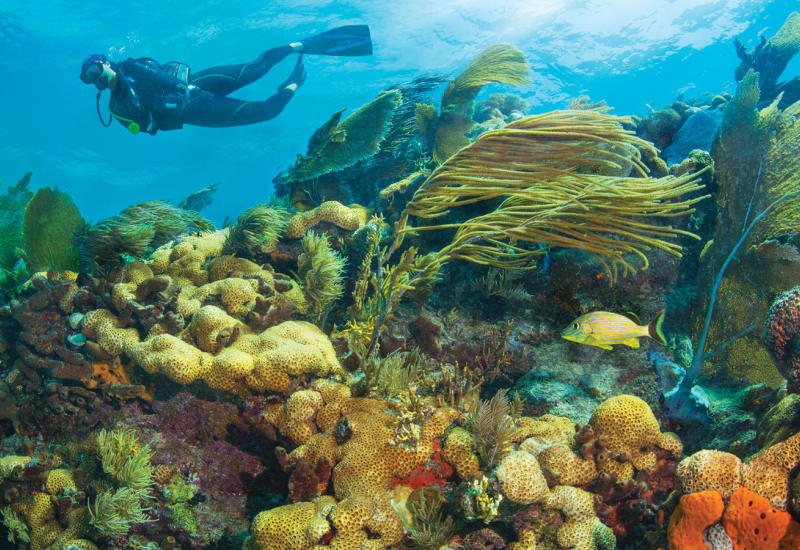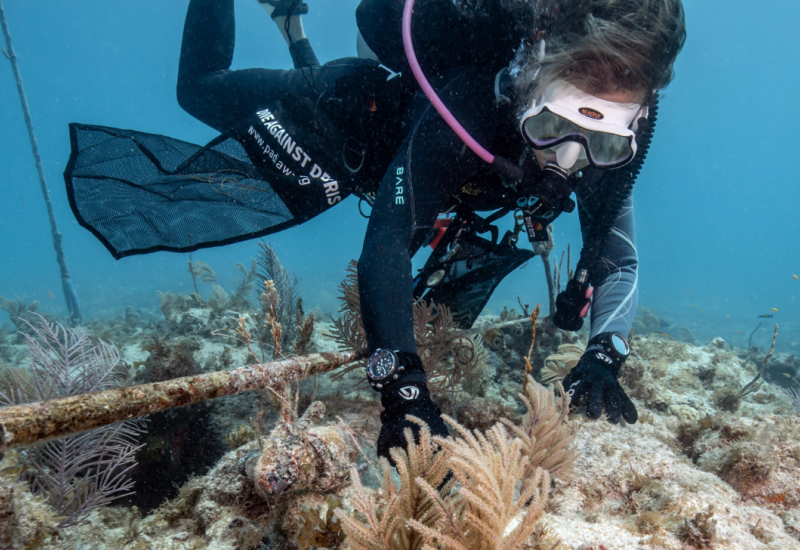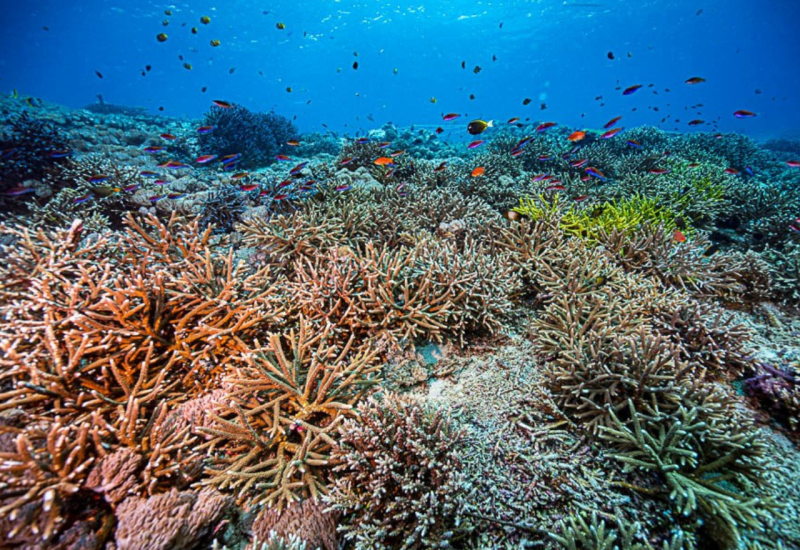How to Identify Isopora Palifera Coral

Nicole HelgasonSharpen your ID skills for the most intriguing coral species.
Isopora forms robust colonies with thick branches, and the entire colony is covered in smooth, rounded corallites. The branches can form in upright blades stretching to the surface, but you can also find thick branches that are horizontal or irregular in shape. This coral can also be encrusting, depending on its exposure to currents and waves.
The top of each blade is normally a pale white when upright. But the pale color is no cause for alarm. This growing edge is just slowly acquiring its symbiotic zooxanthellae algae.
Isopora corallites are quite similar to Pocilopora: small, bumpy and covering the coral branches. However, the big difference is in the size of the branches and the colony. Isopora corals have thick branches that can be 3 feet tall and 10 inches thick.
Read More: How-to Identity Mountainous Star Coral
You often find Isopora on the top of reef slopes, especially where there is strong current and lots of light. Isopora corals can stand up to high waves and storms, and are important corals for buffering the impact of wave energy. When big waves get close to shore, Isopora corals can help dampen this energy before waves reach the coastline, and this can help reduce coastal erosion.
Isopora is mostly a pale brownish-yellow but can also have tints of purple, pink and blue.
If you are looking in an older guidebook, this coral will also be classified as Acropora. It was only recently put in its own genus because it lacks the characteristic axial corallite found in Acropora species.










